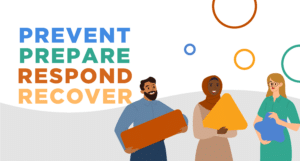Most K-12 safety grants are highly competitive, and there are more applicants than money available. To increase your chance of being awarded, it’s important that you clearly describe your project and how it will improve your student, staff, and overall school safety. It’s also just as important that your passion is evident, and your story is clear and persuasive.
Below we answer some of the most common questions about writing a winning application.
Q. What can I do before I apply to increase my success?
It’s much easier to write a successful grant when you fully understand what your project entails and how it fits in with the grant funding. It is also important that you get the appropriate approval from your stakeholders—such as principals, administrators, and local law enforcement who will be involved—before you begin the grant process. To help develop your project and attain approval, you should write a draft project plan that:
- summarizes the project’s significance, how it will impact your school community, and what problem(s) this project will solve
- details each stage in a timeline
- provides the total cost based on vendor-provided quotes
- includes measurable goals, objectives, and a mission statement
The more details you know about your project, the easier it will be to find a grant that matches your goals. If you’re teaming with a software vendor, they may have language about their school safety products for you to include your project plan. Many components of this project plan will also become part of your grant application when it is time to apply.
Q. How do I write a persuasive, winning application?
Although K-12 grants have many technical components, such as project plans, timelines, and strict budgets, this is also your opportunity to tell a story that inspires change. You are not going to win if your application fails to persuade the funder to choose your project.
Remember you are writing to real person and should appeal to their morals, logic, and emotions. Your narrative needs to be intentional, illustrating the problem you are facing and exactly how the funding will help you solve it. Support your narrative with data, research, and case studies. As an example, when writing your ESSER plan, specifically detail how your project aligns with the CDC and the Department of Education’s best practices for COVID-19 response and school reopening.
Write goals and objectives for your project and clearly link these to measurable actions and outcomes. Make sure to include how you will implement each goal and objective, including who is responsible for each task and how you plan to track the results.
Q. How can I stand out from my competition?
In a recent webinar, Dr. Paula Love, known as the “Funding Doctor,” compared competitive grants to an espresso or cappuccino machine. These sophisticated machines require someone who knows the machine and the exact recipe to make the perfect cup of coffee. “When I think about these machines,” Dr. Love says, “I think about competitive funding. There may be a lot of money but only the people who put the right requirements in will get that winning cup of coffee.”
Writing a grant application cannot be a copy and paste job. You need to customize your application and story to align with the funder’s scoring criteria and goals. The more closely you can align your project with their criteria, the more likely you are to win.
Take some time to review past awardees. Don’t hesitate to reach out to neighboring districts—or even those across the country—to ask them how they were successful in winning the grant. It’s also best practice to contact the grant administrator, unless instructions explicitly say not to, for more insight into how to be successful.
Q. What else can I do to improve my grant application?
Getting that winning cup of coffee, as Dr. Love describes, means you have successfully:
- chosen a grant that is aligned with your project goals
- followed the funder’s application directions and submitted by the deadline
- thoroughly illustrated your passion for the project and how the project will improve your school
- developed a robust, accurate budget and project timeline
- wrote a clear application and story that is focused and supported by data and research
- strengthened your application by working with a trusted school safety vendor, like Raptor Technologies, who provided guidance and language for your grant application
To learn more strategies and best practices, watch our on-demand webinar with Dr. Love or contact us today to talk to a safety expert.





